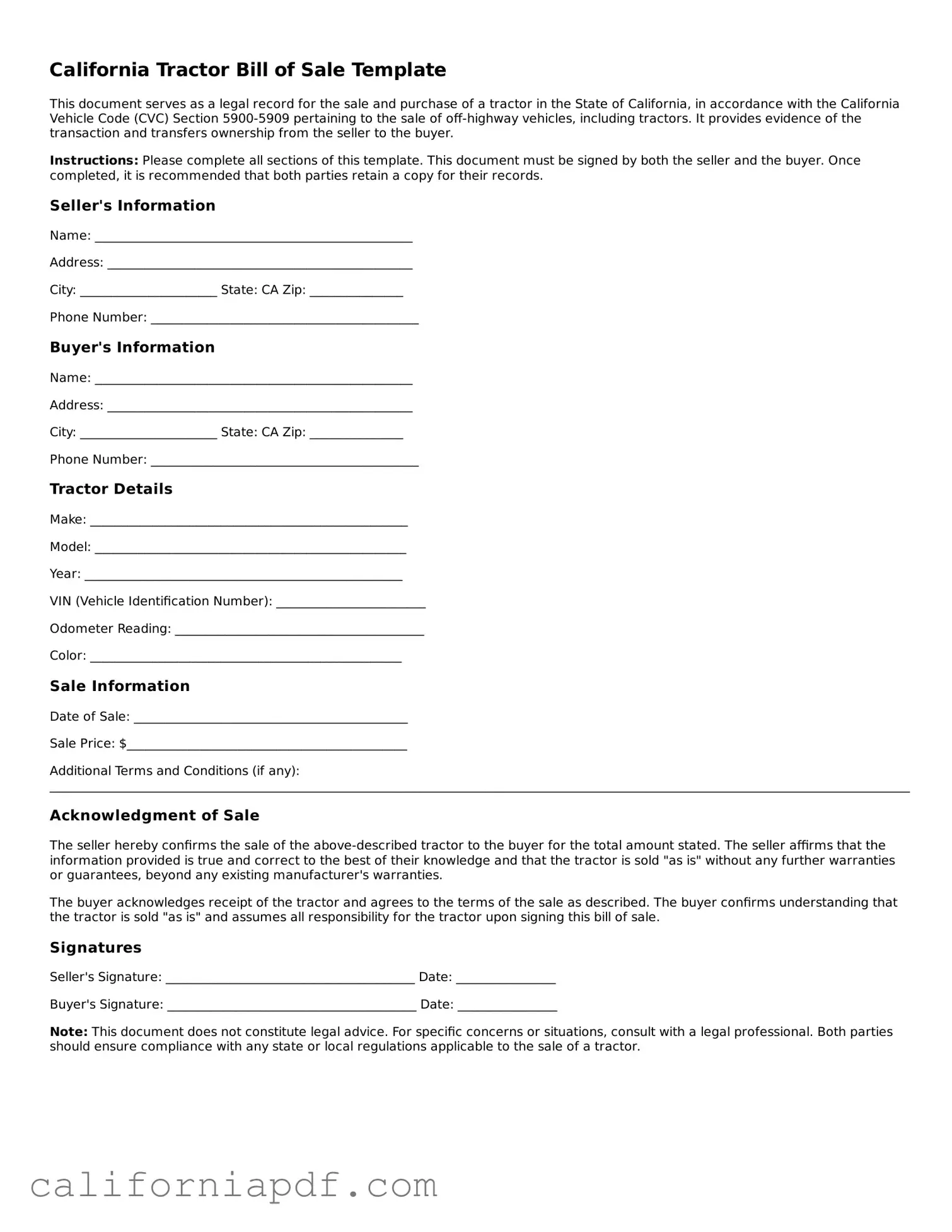California Tractor Bill of Sale Template
This document serves as a legal record for the sale and purchase of a tractor in the State of California, in accordance with the California Vehicle Code (CVC) Section 5900-5909 pertaining to the sale of off-highway vehicles, including tractors. It provides evidence of the transaction and transfers ownership from the seller to the buyer.
Instructions: Please complete all sections of this template. This document must be signed by both the seller and the buyer. Once completed, it is recommended that both parties retain a copy for their records.
Seller's Information
Name: ___________________________________________________
Address: _________________________________________________
City: ______________________ State: CA Zip: _______________
Phone Number: ___________________________________________
Buyer's Information
Name: ___________________________________________________
Address: _________________________________________________
City: ______________________ State: CA Zip: _______________
Phone Number: ___________________________________________
Tractor Details
Make: ___________________________________________________
Model: __________________________________________________
Year: ___________________________________________________
VIN (Vehicle Identification Number): ________________________
Odometer Reading: ________________________________________
Color: __________________________________________________
Sale Information
Date of Sale: ____________________________________________
Sale Price: $_____________________________________________
Additional Terms and Conditions (if any): ______________________________________________________________________________________________________________________________________________________
Acknowledgment of Sale
The seller hereby confirms the sale of the above-described tractor to the buyer for the total amount stated. The seller affirms that the information provided is true and correct to the best of their knowledge and that the tractor is sold "as is" without any further warranties or guarantees, beyond any existing manufacturer's warranties.
The buyer acknowledges receipt of the tractor and agrees to the terms of the sale as described. The buyer confirms understanding that the tractor is sold "as is" and assumes all responsibility for the tractor upon signing this bill of sale.
Signatures
Seller's Signature: ________________________________________ Date: ________________
Buyer's Signature: ________________________________________ Date: ________________
Note: This document does not constitute legal advice. For specific concerns or situations, consult with a legal professional. Both parties should ensure compliance with any state or local regulations applicable to the sale of a tractor.
